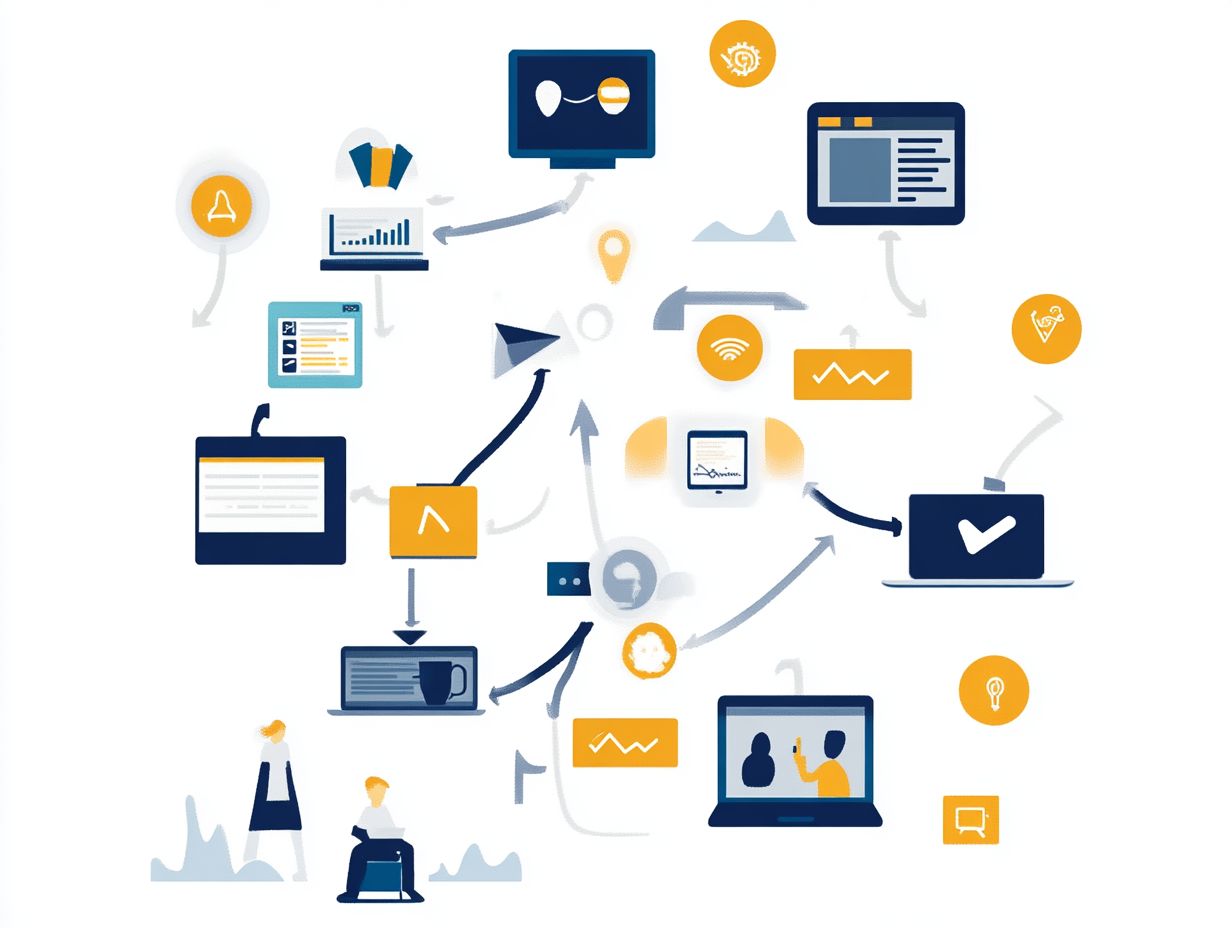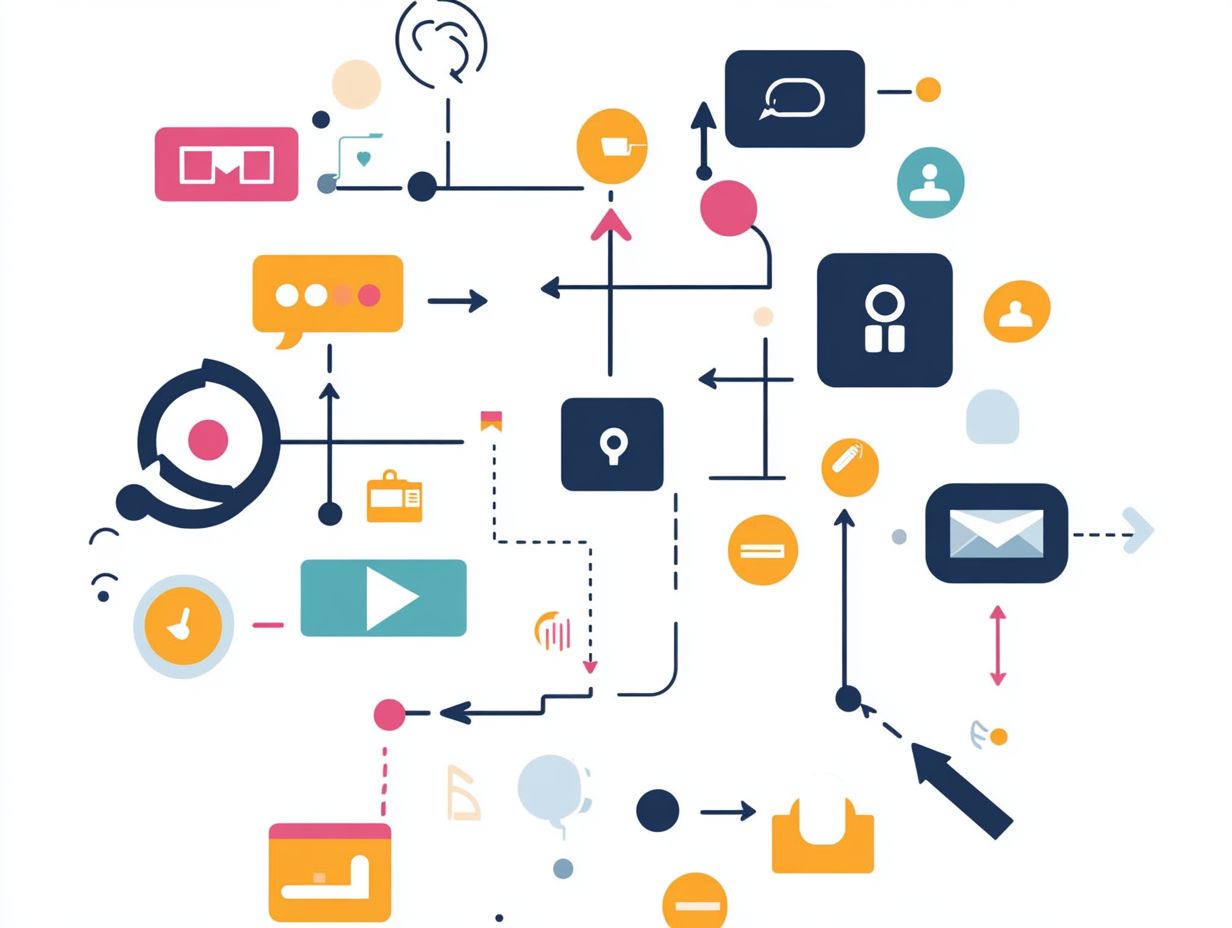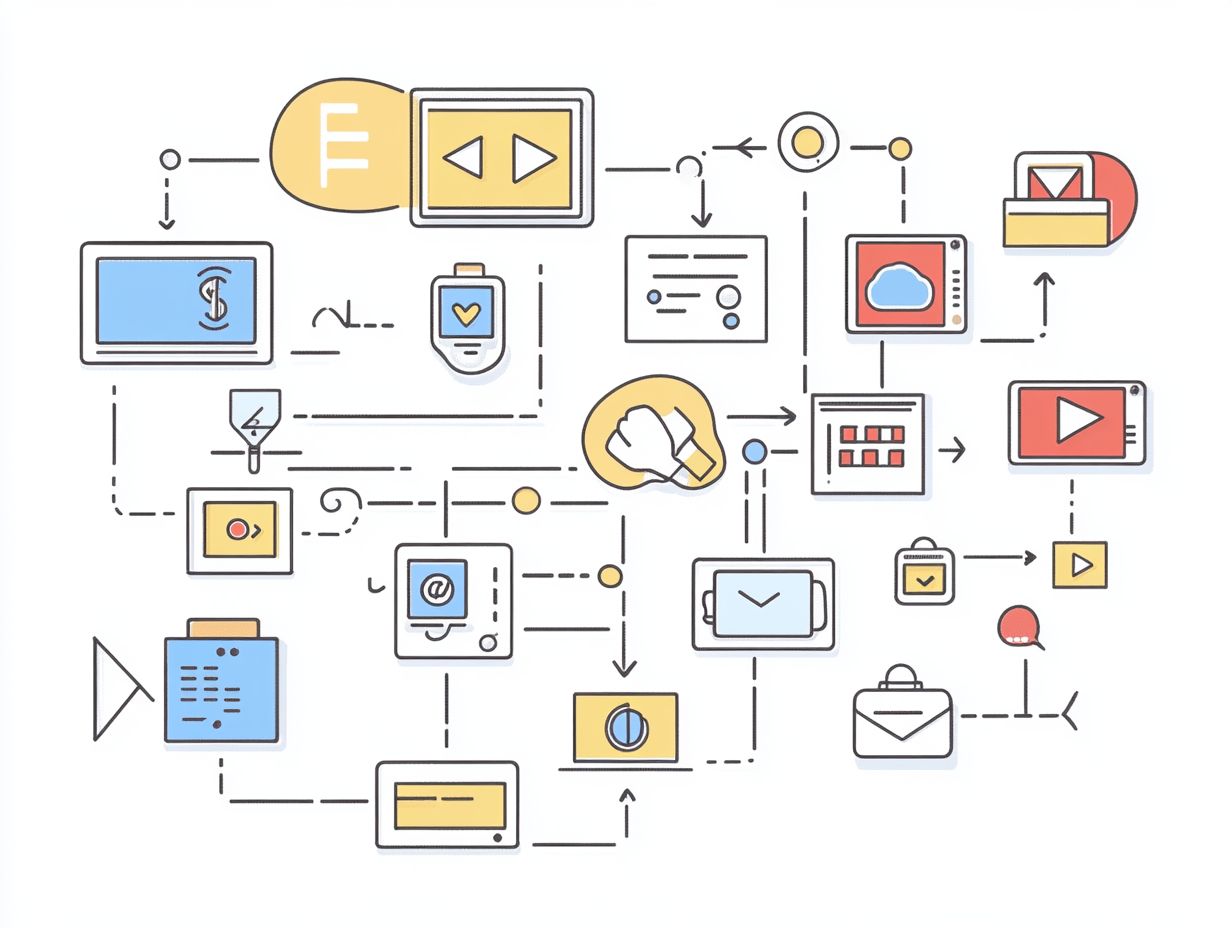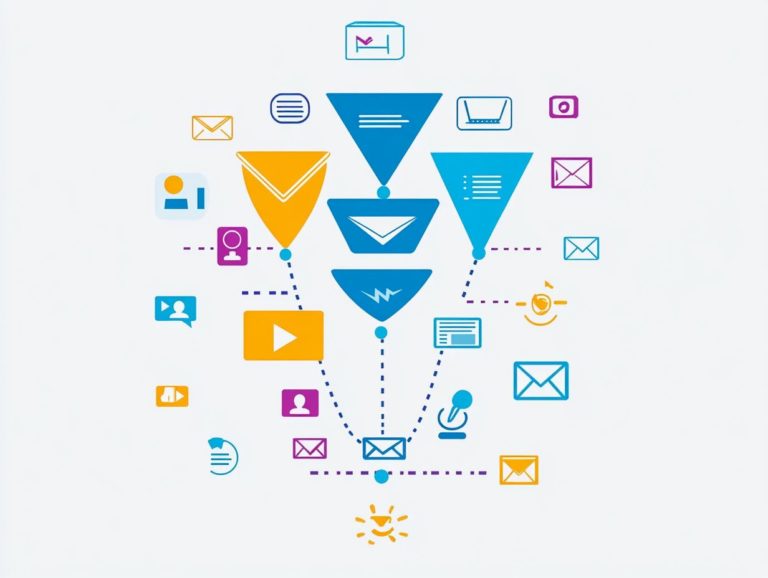Understanding Customer Journeys in Digital Marketing
Let's Set Up Your Lead Generation Strategy
Fill out the form below, and our team will get in touch with you to create a tailored solution for your business.
In the ever-evolving landscape of digital marketing, grasping the intricacies of the customer journey is paramount. This article delves into what constitutes a customer journey and its significance for brands like yours.
You ll find a detailed breakdown of the stages from awareness to advocacy complete with insights into each phase. You will also uncover practical tools for mapping these journeys, strategies for optimization, and essential metrics to monitor your success.
Dive in to discover how to craft exceptional customer experiences that not only foster loyalty but also propel growth by utilizing customer feedback to improve your offerings.
Contents
- Key Takeaways:
- What is a Customer Journey?
- Stages of a Customer Journey
- Let's Set Up Your Lead Generation Strategy
- Mapping Customer Journeys
- Optimizing Customer Journeys
- Measuring the Success of Customer Journeys
- Let's Set Up Your Lead Generation Strategy
- Frequently Asked Questions
- What are the different stages of a customer journey in digital marketing?
- How can I use customer journey insights to improve my digital marketing efforts?
- What are some common challenges in understanding customer journeys in digital marketing?
Key Takeaways:

- Understanding the customer journey is crucial in digital marketing as it helps businesses better target and engage their audience through effective content marketing.
- Mapping the customer journey involves identifying stages such as awareness, consideration, conversion, retention, and advocacy, and using tools and techniques to understand customer behavior.
- To optimize customer journeys, businesses should focus on strategies that improve the customer experience and measure success through key metrics and analytics.
What is a Customer Journey?
The customer journey is a detailed map of the stages you navigate when interacting with a brand, spanning from that initial spark of awareness to the final moments of advocacy. It includes various interactions that capture your customer behavior and the emotional connections you forge throughout your experience with a product or service.
Grasping the nuances of the customer journey is crucial for enhancing your overall experience, boosting brand advocacy, and nurturing loyalty. It offers valuable insights into your customer needs and pain points at every step of your engagement, informing your approach to customer retention.
Stages of a Customer Journey
Discover the five key stages of the customer journey that can transform your brand’s relationship with customers: awareness, consideration, conversion, retention, and loyalty. Each phase plays a crucial role in guiding you from initial interest to becoming a brand advocate.
In the awareness stage, you encounter a product or service for the first time, sparking your curiosity. Next is the consideration stage, where you weigh your options and evaluate what best meets your needs. The conversion stage represents your pivotal purchase decision, marking a significant moment in your journey.
After the purchase decision, the focus shifts to retention and loyalty, where sustained engagement and your ongoing success with the brand take center stage.
Now that you understand the stages, it’s time to apply these insights to enhance your customer journey and elevate your brand’s success.
Awareness, Consideration, Conversion, Retention, Advocacy
The awareness stage is where your journey begins, as potential buyers discover your brand and its offerings. This sparks their curiosity, leading them into the consideration stage, where they thoughtfully weigh their options.
As they inch closer to making a purchase, they transition into the conversion phase. This phase is all about keeping them engaged and satisfied. This journey ends in advocacy. Customers become loyal brand ambassadors.
During the awareness phase, potential customers engage with various content forms. These include blog posts, social media ads, and informative videos. All of these help them identify the problems they re eager to solve.
The marketing strategies employed here are designed to effectively target specific profiles of potential customers. This ensures that your messaging resonates with their unique interests and needs.
As they shift into the consideration stage, the focus changes to detailed product comparisons, reviews, and case studies. This phase underscores the importance of building trust and credibility. Marketing teams can use email campaigns and retargeting ads to gently nudge these potential buyers further along their journey.
Let's Set Up Your Lead Generation Strategy
Fill out the form below, and our team will get in touch with you to create a tailored solution for your business.
In the conversion phase, well-placed call-to-actions and enticing promotions encourage customers to finalize their decisions. Once in the retention phase, delivering personalized content and implementing loyalty programs becomes pivotal in sustaining their satisfaction.
By motivating satisfied customers to share testimonials or engage on social media, you can foster advocacy. This transforms them into enthusiastic promoters who amplify your brand’s reach, contributing to overall brand awareness.
Mapping Customer Journeys

Mapping customer journeys is crucial for your success! This practice helps you identify key moments that can change the game for your business.
By utilizing a range of tools and techniques, such as experience mapping and digital journey mapping, you can uncover valuable insights into customer behavior and preferences. This knowledge empowers you to tailor your approach to meet specific customer needs, ultimately enhancing satisfaction and fostering loyalty.
Tools and Techniques for Understanding Customer Behavior
Numerous tools and techniques are at your disposal for gaining a deep understanding of customer behavior. These resources give your brand the power to collect invaluable data and insights that shape your marketing strategies.
These include customer surveys, marketing analytics, and data collection methods designed to pinpoint pain points, preferences, and trends within the customer experience.
By harnessing sentiment analysis tools, you can delve into customer reviews and social media comments. This uncovers patterns that highlight what resonates positively or negatively with your audience. Heatmaps will visually depict how customers navigate your website, providing clear indicators of where improvements are necessary to enhance usability.
Utilizing CRM systems allows you to aggregate and segment customer data. This facilitates targeted marketing efforts that speak directly to distinct demographics. Such insights not only refine the customer journey but also empower you to create tailored content that effectively engages your audience, ultimately driving loyalty and conversion.
Optimizing Customer Journeys
Optimizing customer journeys requires you to implement targeted strategies that elevate the overall experience. Focus on enhancing customer engagement at every touchpoint.
By embracing proactive customer service and harnessing valuable customer feedback, you can pinpoint areas for improvement. This approach ensures a seamless experience that not only addresses your customers’ needs but also fosters loyalty.
Strategies for Improving the Customer Experience
Let’s elevate your customer experience together! Consider implementing a variety of strategies focused on enhancing retention and building brand awareness through targeted marketing content. By gaining a deep understanding of the customer journey and aligning your strategies with customer preferences, you can create meaningful interactions that foster loyalty and advocacy.
This might mean utilizing data analytics to uncover insights into customer habits, allowing you to tailor your communications to address specific needs at various stages of the purchasing process. For instance, personalized emails reflecting past purchases can engage customers during the consideration phase. Follow-up surveys can boost post-purchase satisfaction.
Incorporating feedback loops enables you to adapt your offerings based on real-time insights, ensuring you remain relevant and appealing. Employing user-friendly interfaces on your website or apps significantly enhances the experience, making navigation seamless and enjoyable. This approach ultimately encourages repeat visits and strengthens the bond with your customers.
Measuring the Success of Customer Journeys

Let's Set Up Your Lead Generation Strategy
Fill out the form below, and our team will get in touch with you to create a tailored solution for your business.
Measuring the success of customer journeys demands a meticulous analysis of key metrics and analytics that illuminate how effectively your brand meets customer needs at every stage of the buyer’s journey. By closely tracking conversion rates, customer engagement, and customer feedback, you can gain valuable insights into the effectiveness of your marketing strategies and identify opportunities for improvement.
This ongoing evaluation allows you to refine your approach continuously, enhancing the overall customer experience and ensuring that your brand remains responsive to evolving expectations.
Key Metrics and Analytics to Track
Key metrics and analytics are essential for tracking the effectiveness of your customer journeys. They provide invaluable insights into conversion rates, levels of customer engagement, and overall satisfaction based on feedback.
By keeping an eye on specific metrics like the Net Promoter Score (NPS) and Customer Satisfaction Score (CSAT), you can gauge how well your business is meeting customer expectations. Analyzing bounce rates and average session durations will help you pinpoint potential drop-off spots in the customer journey.
Understanding these dynamics gives you the power to make informed adjustments to your strategies, effectively addressing any pain points. Engagement metrics, such as click-through rates and time spent on site, also deliver critical data to support your personalization efforts, ultimately enhancing customer retention and loyalty.
Frequently Asked Questions
What is meant by understanding customer journeys in digital marketing?
Understanding customer journeys in digital marketing refers to the process of analyzing and mapping out the different touchpoints a customer goes through before making a purchase decision or taking a desired action on a digital platform.
Why is understanding customer journeys important in digital marketing?

Understanding customer journeys allows marketers to identify the most effective and efficient ways to reach and engage with their target audience, enhancing brand awareness and customer engagement. It also helps them optimize their digital marketing strategies to better meet the needs and preferences of their customers.
How can I map out a customer’s journey in digital marketing?
Customer journey mapping involves gathering data from various touchpoints, such as social media, email, and website interactions, and analyzing how customers move through these channels, including their interactions during journey stages. This can be done through tools like Google Analytics or by conducting surveys and interviews with customers.
What are the different stages of a customer journey in digital marketing?
The stages of a customer journey generally include awareness, consideration, purchase, and post-purchase. These stages show the steps customers take before and after their purchase.
How can I use customer journey insights to improve my digital marketing efforts?
Unlock powerful insights from your customers journey! Identify pain points to enhance their experience and keep them coming back.
What are some common challenges in understanding customer journeys in digital marketing?
Common challenges include limited data and tracking how customers engage with your brand across different platforms. Marketers should regularly review their customer journey mapping processes to stay updated with trends.






